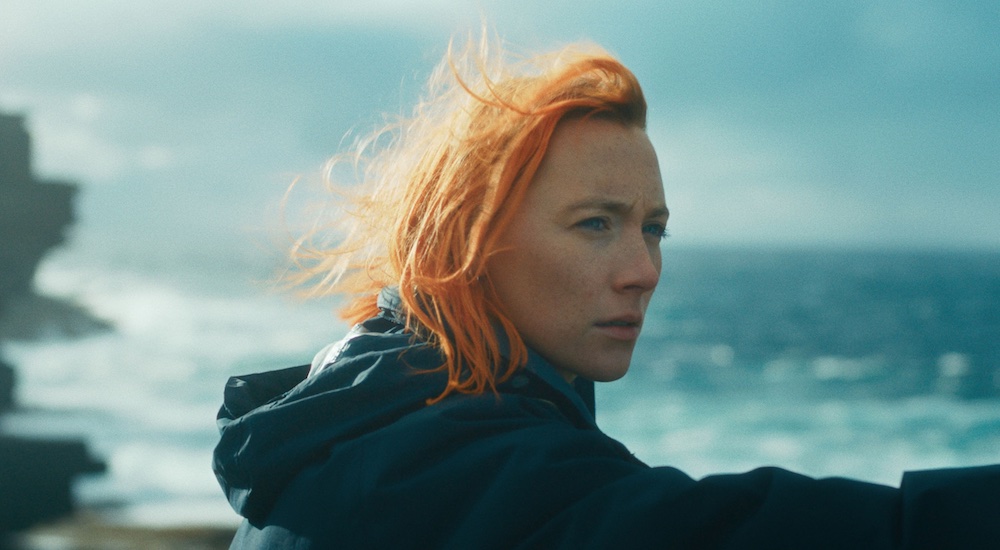The Outrun begins with a voice-over from Rona (Saoirse Ronan) explaining the legendary Scottish creatures, selkies. Rona explains that they’re shapeshifters, becoming human women at night and returning to the seas as seals during the day. But sometimes, they get stuck on land and stuck in their human form, doomed to be discontent on land because they belong to the sea. It’s a fitting start to our story of a woman recovering from alcoholism. Amidst the beautiful, brutal landscape of the Orkney Islands, Saoirse Ronan is expectedly fantastic but the story itself relies on her skills too much to excel overall.
Having moved to London to pursue her master’s degree in biology, Rona’s story follows a well-worn path, falling into partying. Eventually, the drinking spirals so out of control that she must go to rehab and move back home to the Orkney Islands, an isolated cluster of islands off the northeastern coast of Scotland. The landscape is sparse, full of sandstone cliffs, whipping winds, and seal colonies. It’s a setting that perfectly reflects Rona’s turmoil, the day-to-day battle to stay sober. She splits her time between her father’s sheep farm as he struggles with his bipolar disorder and her staunchly Christian mother’s home, gritting her teeth through bible study meetings.
The film, smartly, does not reveal Rona’s story chronologically. Instead, it flashes backward and forward between her time drinking and sober. This out-of-order storytelling can be confusing, but the film uses two techniques to help the viewer keep up. The first is Rona’s hair color, switching between all-blue or all-red hair and then their eventual growouts. The second is relying on Saoirse’s acting to relay the timeline. Based on her emotional state, it’s generally pretty clear where Rona is in her sobriety journey, and any timeline uncertainties help convey the non-linear path of recovering from addiction.
It’s small details that make the setting and situation feel anchored and real. For instance, when Rona listens to music on the cliffs through headphones, the Orkney winds are too intense to be drowned out, and you can hear the sounds of the wind cutting through the music. Rona helps with lambing season on her dad’s farm, nonchalantly pulling newborn lambs from sheep in well-practiced movements. When she volunteers for a nature-society, she must methodically listen for rare birds in a mind-numbingly boring grid pattern from her car. These small moments help ground the film in everyday life, making Rona all that more relatable.
To no one’s surprise, Saoirse Ronan is phenomenal as Rona. She’s immediately captivating and embodies Rona’s vices and strengths as she works to figure out how to create a life without alcohol and how to forgive herself for the mistakes of her past. And since Rona is by far the protagonist of our story, The Outrun’s success relies on the excellence of its star.
Still, as exceptional as Ronan is, The Outrun does not say anything new or profound about addiction journeys. It’s a valuable story to tell, adapted from Amy Liptrot’s memoir. Between Ronan’s performance and the hauntingly beautiful Orkney Islands, it’s certainly a feast for the eyes. While a beautiful addition to the genre of addiction films, it won’t end up as a highlight.

